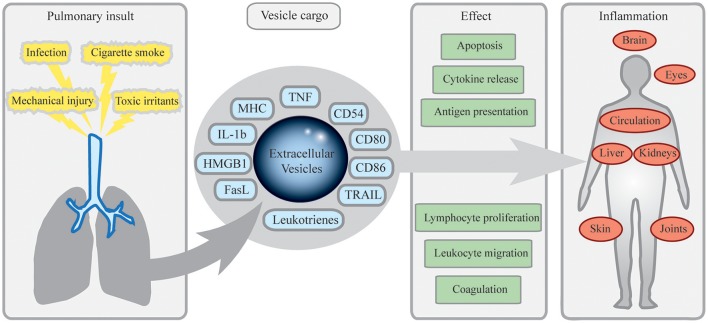Figure 1.
Mechanisms of inflammatory dissemination by pulmonary extracellular vesicles (EV). Pulmonary insults including cigarette smoke, toxic irritants, infection, or mechanical injury such as burns or particle exposure lead to release of EVs from cells of the airways. Equipped with antigen presenting, costimulatory and pro-inflammatory molecules, these EVs may exit pulmonary compartments, spread systemically and induce cellular migration, apoptosis, cytokine release, and other effects contributing to inflammation. In peripheral lymphoid organs, this could induce antigen-specific reactions leading to inflammation and autoimmunity. Pulmonary EVs may also contribute to joint inflammation in rheumatoid arthritis, fever, and systemic effects via the central nervous system, spread of sarcoidosis to the eyes and the heart, and to dissemination of components from pathogens of the airways.

